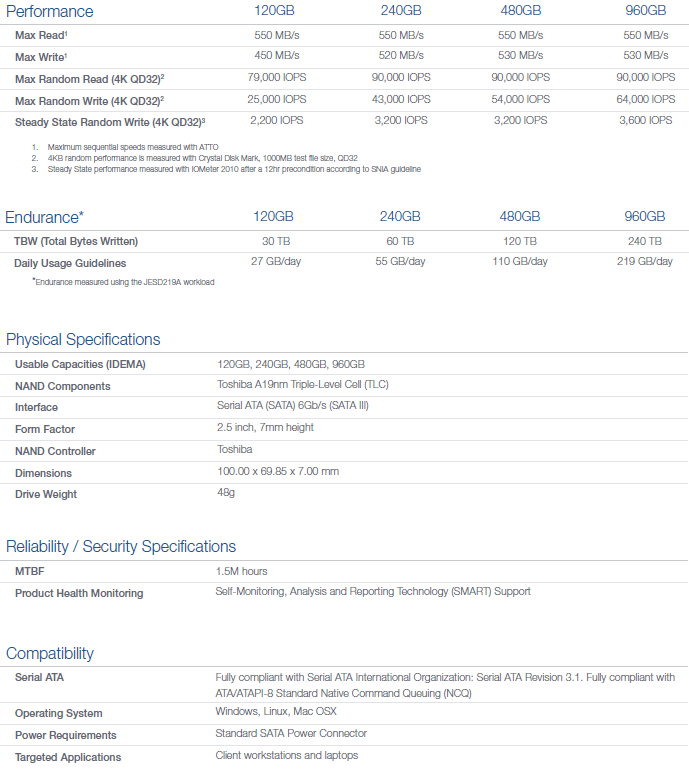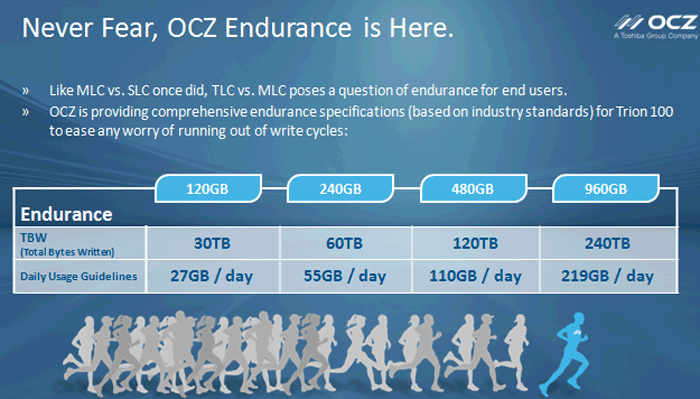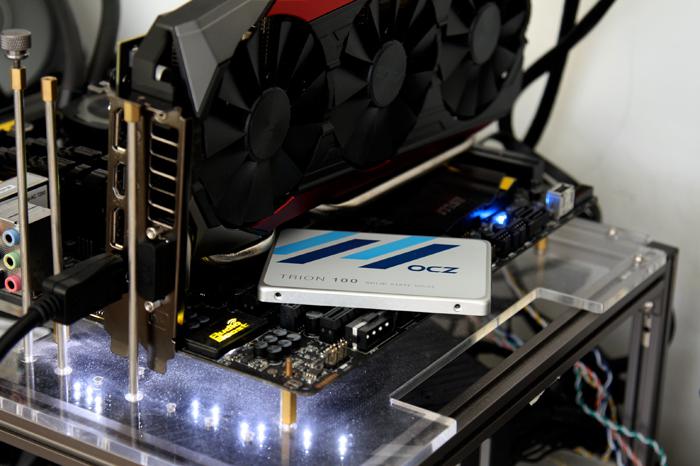Specifications & Features
Specifications & Features
The sample(s) that OCZ submitted are substantial, with volume sizes of 240 and 480GB. This series is equipped with Toshiba TLC NAND flash memory from the A19nm node. This product is a notch slower in writes overall though due to that TLC NAND Flash memory, but overall the previous generations are sitting roughly in the same domain performance wise. Below, an overview of the models released in respect to their specifications.
OCZ will release four models, 120 GB, 240 GB, 480 GB and a big daddy 960 GB version. Due to the architecture and memory channels used, the 120 GB and 240 GB models will be a notch slower, albeit that is a very modest performance difference. This is pretty much the rule of thumb for any brand BTW. Still, a 120 GB SSD performing at 550 MB/sec read and 450 MB/sec write performance remains fast, especially if you keep the price in mind as, starting at 240GB, you are seeing 35 to 40 EURO cents per GB. Over time with volume availability you can save to shave off another 10%.
- SATA 3 - 6Gbp/s Interface
- A19nm Toshiba TLC NAND Flash
- 7mm form factor
- 120 GB, 240 GB, 480 GB and 960 GB models
- Performance and endurance without compression/loss of usable capacity
- Power consumption IDLE 0.830W / Active 4.80 W
- TRIM support
- 3 Year Warranty




